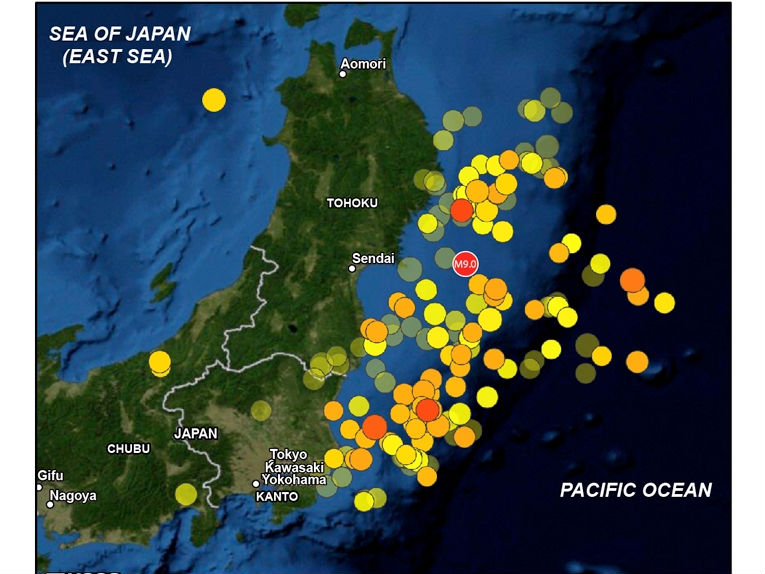The recent earthquake in Japan has increased the likelihood of seismic disruptions elsewhere in the country as stress is displaced along the fault which triggered the shock and accompanying tsunami say researchers.
The quake was measured at magnitude 9.0 and caused terrible destruction and loss of life, including triggering an emergency at the Fukushima nuclear plant.
But, far from Japan's largest ever quake signalling a period of peace for the nation, scientists from the Woods Hole Oceanographic Institution (WHOI), Kyoto University and the U.S. Geological Survey (USGS) say the release of pressure on one part of the fault may cause problems elsewhere.
Data from the magnitude 9.0 Tohoku earthquake on March 11 has brought scientists a small but perceptible step closer to a better assessment of future seismic risk in specific regions, said Shinji Toda of Kyoto University, a lead author of the study. ''Even though we cannot forecast precisely, we can explain the mechanisms involved in such quakes to the public,'' he said. Still, he added, the findings do bring scientists ''a little bit closer'' to being able to forecast aftershocks.
''Research over the past two decades has shown that earthquakes interact in ways never before imagined,'' write Shinji Toda of Kyoto University, Jian Lin of WHOI and Ross S. Stein of USGS.
''A major shock does relieve stress-and thus the likelihood of a second major tremor-but only in some areas. The probability of a succeeding earthquake adjacent to the section of the fault that ruptured or on a nearby but different fault can jump significantly.''
Because of Japan's seismic history the country has one of the most advanced earthquake monitoring networks in the world and scientists have jumped at the chance afforded by the Tohoku earthquake, off northern Honshu Island, to study how quakes behave.
Now, the Tokyo area, Mount Fuji and central Honshu including Nagano are at risk with Tokyo now at more than 70 percent risk for a magnitude seven earthquake over the next 30 years according to the researchers.
''We must recognize that because our knowledge is incomplete, our estimation of seismic hazard is likely to be underestimated in many cases. Thus we must prepare for potential hazard that might be worse than we already know,'' Lin said.
The finding that a quake such as this one can increase stresses elsewhere ''means that new quakes could occur in the region,'' Lin said. ''We must factor in this new information on stresses into earthquake preparedness.''
(Top Image: Map showing the 11 March 2011 magnitude 9.0 off Tohoku mainshock and 166 aftershocks of magnitude 5.5 and greater until May 20. Warmer color indicates more recent events. Larger symbol indicates greater quake magnitude.) (Modified from figure created by the U.S. Geological Survey)










